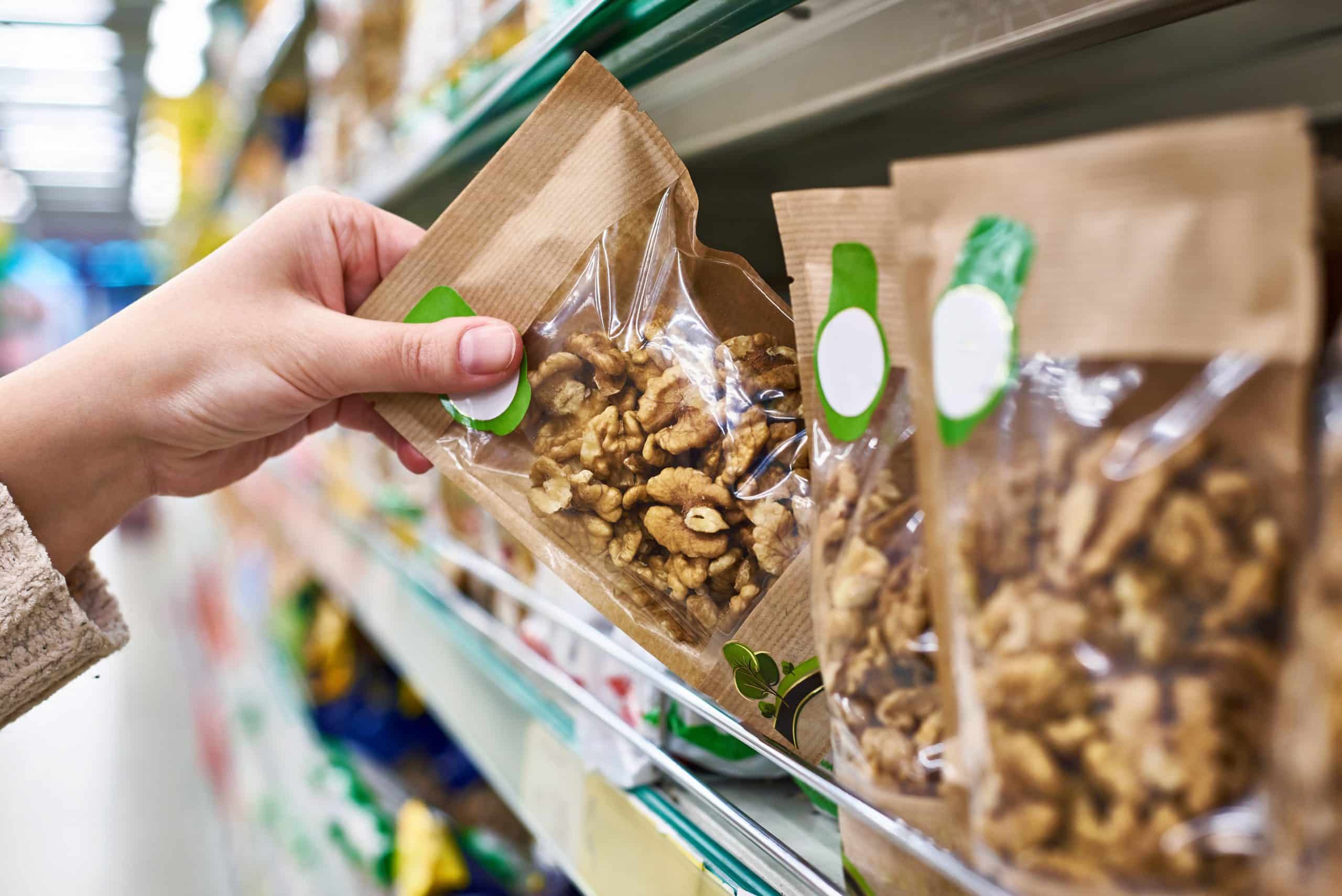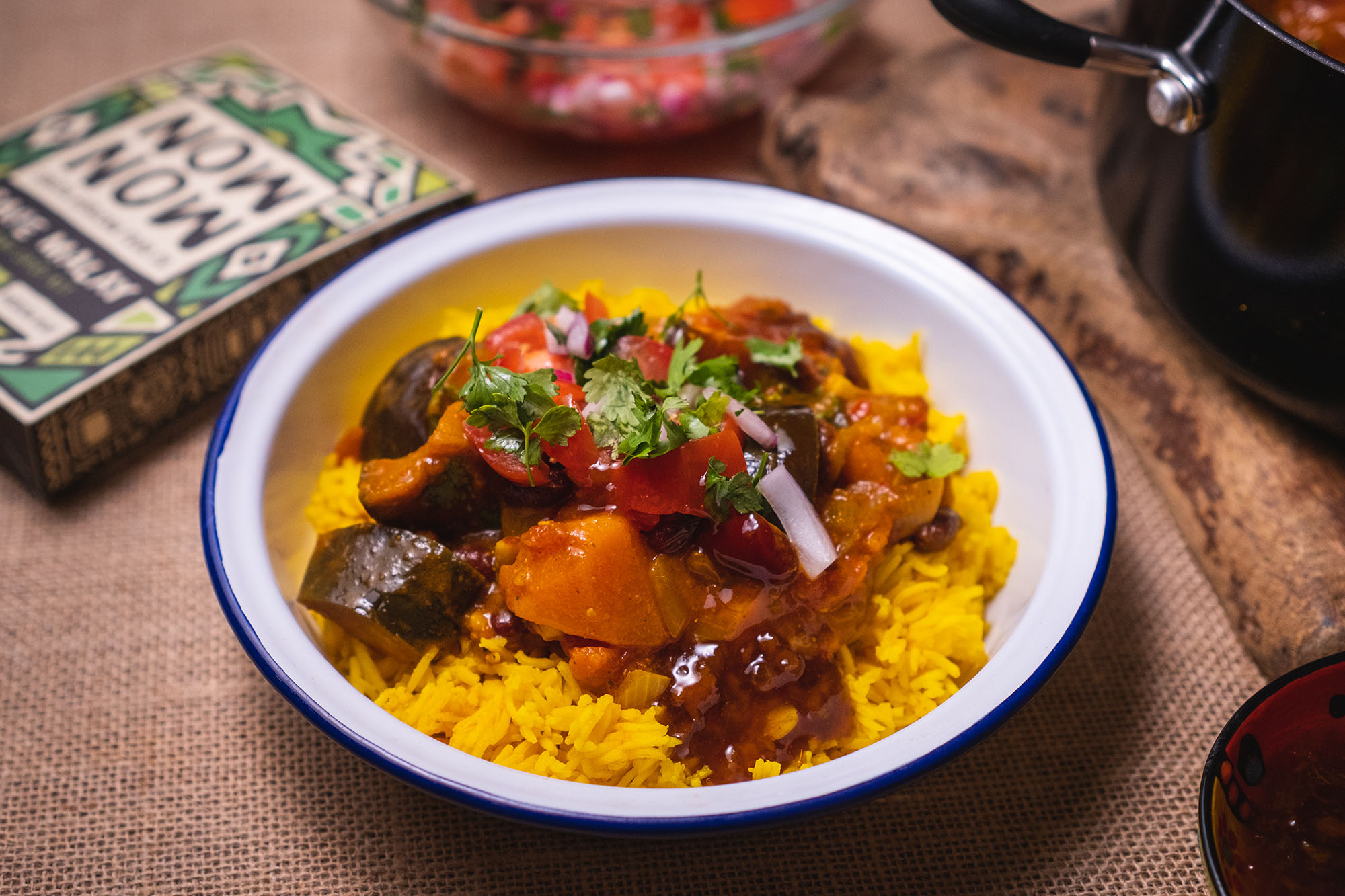Introduction
Packaging, particularly front-of-pack messaging, plays an integral part of your overall marketing and, if done correctly, will draw in flexitarians to buy and try your product.
Here are three golden rules for front-of-pack messaging of plant-based brands to target the growing number of flexitarian consumers globally.
1. Emphasise taste, familiarity, convenience, and health
Yes, flexitarians value health, but they also don’t want to miss out, so indulgent messaging is important too.
Tofoo’s Scrambled Tofu packaging really illustrates this point; it is clear that they are integrating these top criteria for flexitarian consumers into their messaging. The packaging artwork subtly features an image of a typical ‘scrambled egg’ meal, which looks both tasty, healthy, and familiar. Convenience is reinforced by the description, which tells us that the product is pre-scrambled and pre-seasoned.1
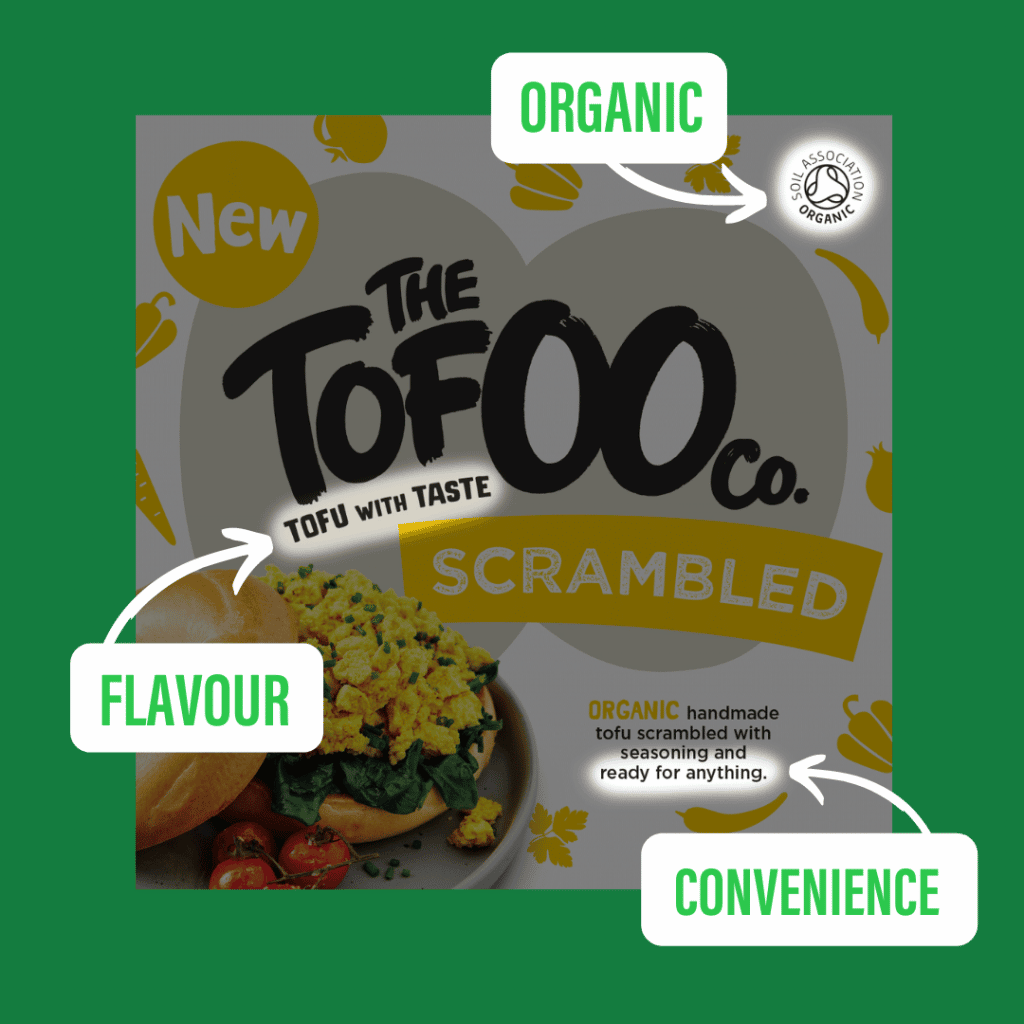
Tofu can sometimes be seen as quite a scary, difficult to prepare, or potentially bland product for non-vegan consumers, so Tofoo has done a great job of ensuring that flexitarians know how to use it and find it easy to incorporate it into their typical meals.
Similarly, the messaging that accompanies their new ‘straight-to-wok’ tofu product emphasises just how simple it is to prepare and even gives the cooking time on the front of the pack to encourage convenience-seeking flexitarians to purchase the product.
Richmond also does a great job of targeting flexitarians with their front-of-pack messaging, which uses tantalising language to promote taste, whilst ensuring that flexitarians see this product as familiar and healthy.
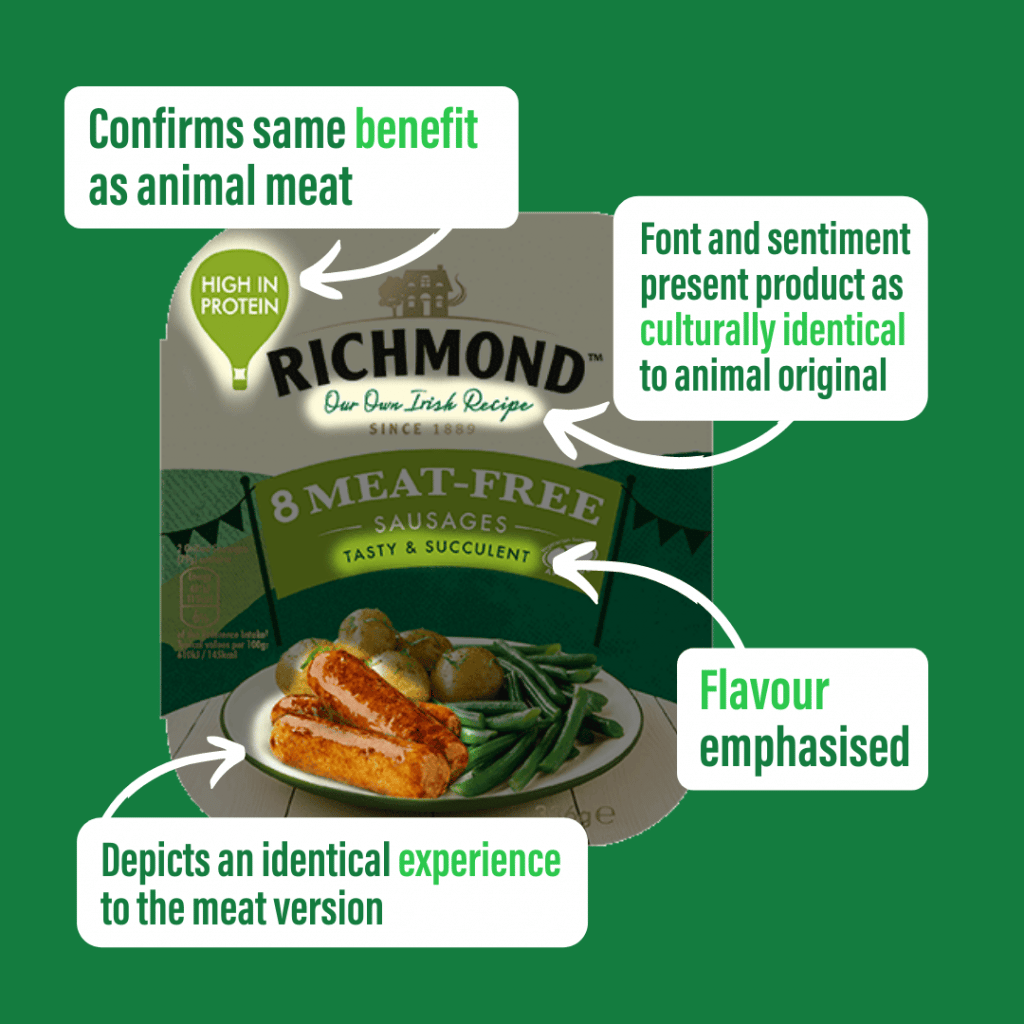
As we’ve seen in some of the previous examples, images are a handy tool to illustrate familiarity to the flexitarian consumer. Most consumer behaviour is subconscious,2 which means your product’s packaging has to connect with the instinctual part of a shopper’s mind. One way to achieve this is to make your plant-based packaging mimic the packaging of the traditional, animal-based product as closely as possible.3
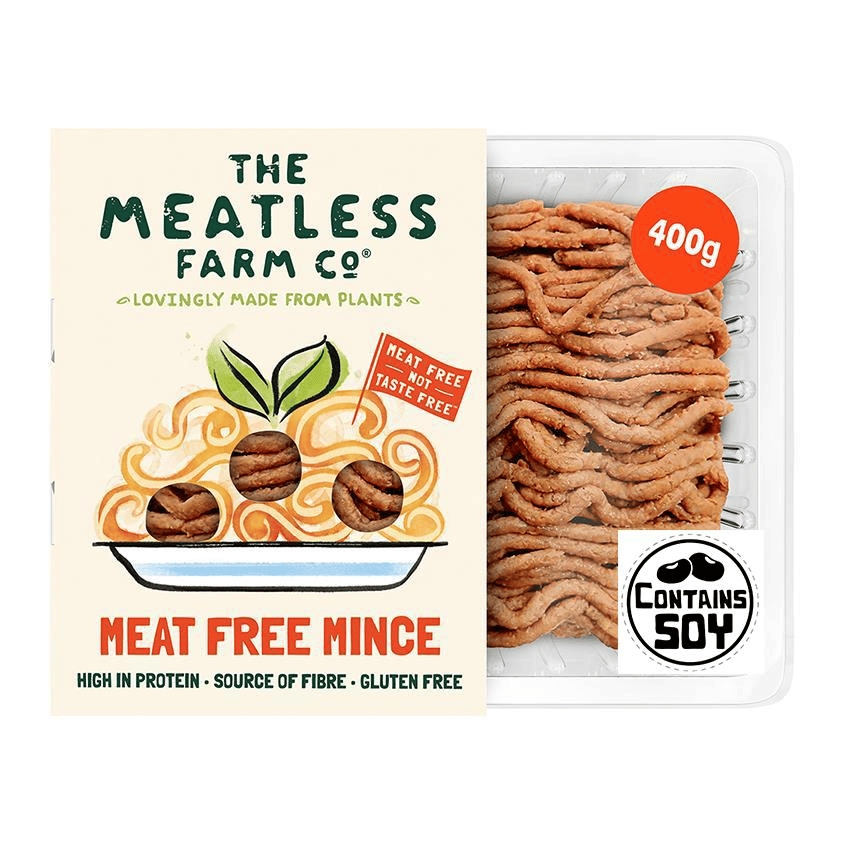
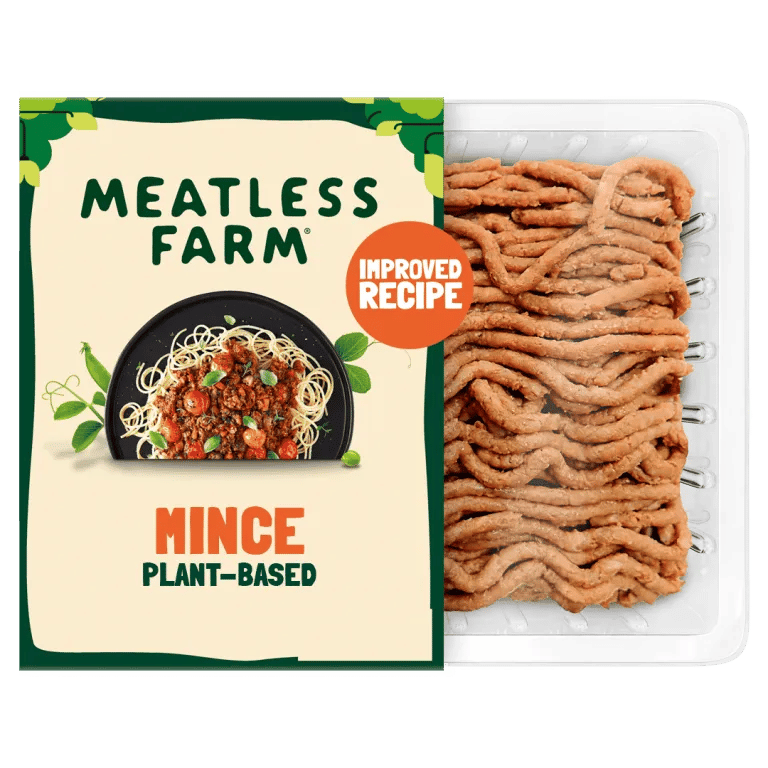
Meatless Farm uses a vibrant serving suggestion as the key element of their front-of-pack design. Their original packaging (shown on the left) used artwork in a rustic, hand-drawn style to evoke feelings of hearty, traditional home cooking and freshness.
In the updated design (shown on the right), the serving suggestion is now a photo showing a more fine-dining experience – while staying within most people’s home-cooking abilities. By depicting their meatless mince as an ingredient in a popular, mainstream dish like spaghetti bolognese, the brand is helping flexitarian consumers to emotionally connect with their product and understand how best to integrate it into their typical weeknight meals. They’re championing familiarity, with a plant-based twist.
So to summarise, when it comes to indulgence, data from Innova shows that indulgent descriptors on products have increased by 34% between 2019 and 20214 – showing that brands are taking innovative steps to successfully target flexitarian consumers with their on-pack messaging.
2. Avoid restrictive language
Opting for ‘plant-based’ on the front, with a V-Label certification on the back to maximise your product’s appeal to flexitarians.
The right terminology is key to successfully targeting flexitarians, but there still seems to be some uncertainty around the definition of ‘plant-based’ amongst consumers.
The term ‘vegan’ is well-understood by flexitarians in native English-speaking countries, as illustrated by a survey carried out by ProVeg International, which found that 72% of UK respondents and 64% of US respondents understand that a vegan product ‘definitely does not contain animal meat, eggs, or dairy’. By comparison, only 51% of UK flexitarians and 54% of US flexitarians believe the same statement applies to products labelled as ‘plant-based’.
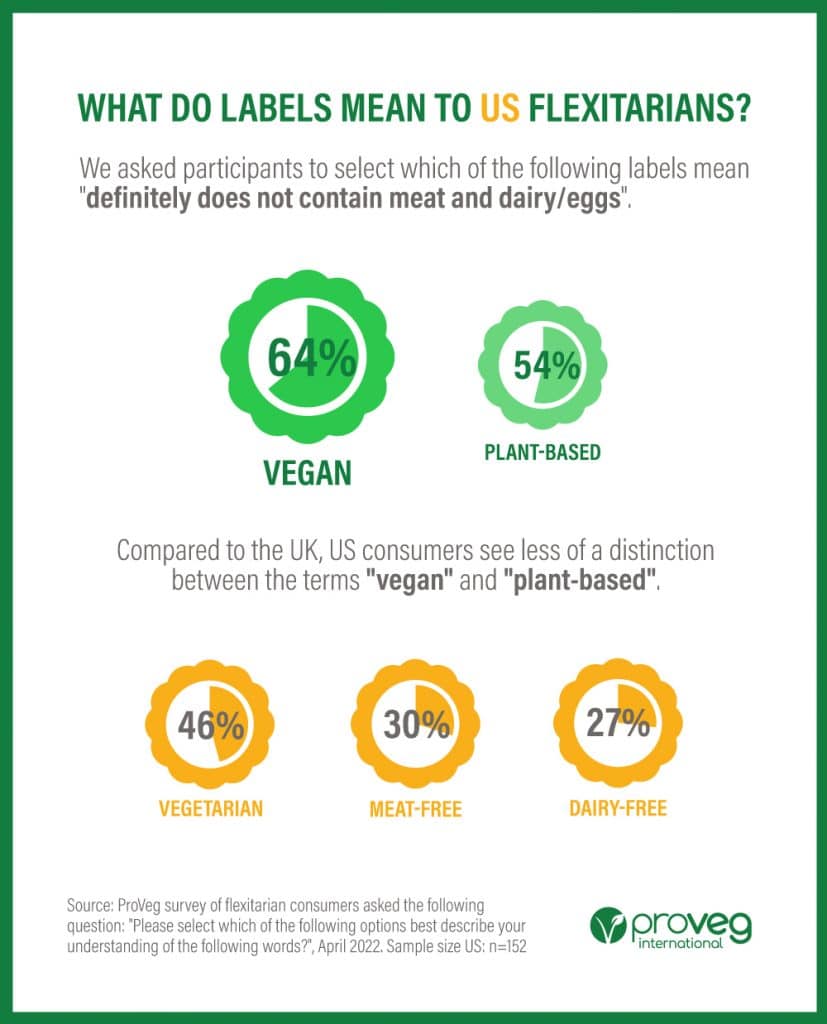
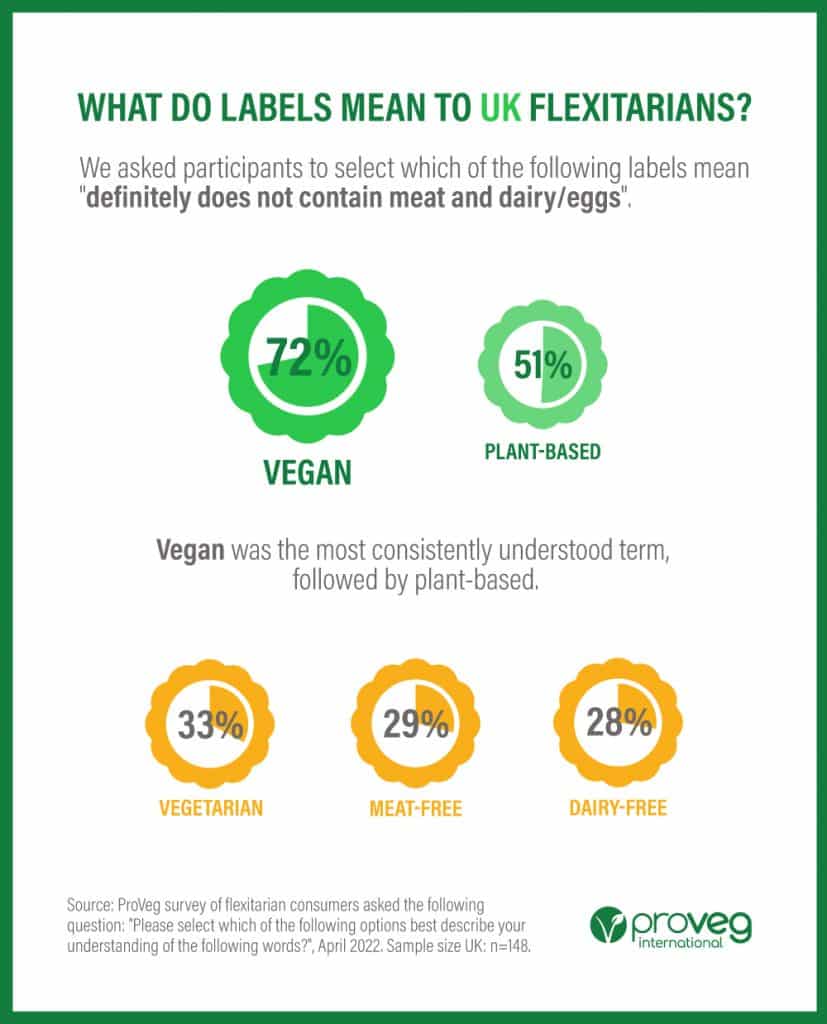
So if ‘vegan’ is better understood than ‘plant-based’, why not use this language on the front of the pack? Well, research by the Good Food Institute found that variants of the label ‘plant-based’ increased mainstream consumer purchasing intent by around 20% compared to the label ‘vegan’.5
With no formal legal definition in the UK or EU regarding a vegan or plant-based product, this is perhaps an underlying cause of consumer confusion, as the two terms tend to be used interchangeably. This is why it’s crucial that products get V-Label certification, as it’s the most reliable way to give consumers seeking 100% animal-free products confidence that they might otherwise lack based on terminology alone.
We’ve seen earlier that flexitarians value indulgence, so ProVeg recommends avoiding restrictive language such as ‘meat-free’ and rather opting for ‘100% plant-based protein’ on the front of pack, with a V-Label certification on the back to best appeal to the flexitarian consumer. To learn more about the V-label, visit https://www.v-label.eu/de.
3. Consider highlighting the sustainability of your product prominently
Environmental impact is becoming increasingly important to consumers.
A pan-EU survey run by ProVeg International as part of the Smart Protein Project found that 62% of European consumers want their food to be environmentally sustainable.6 These findings are in line with Forbes research which revealed that 65% of modern consumers are seeking brands and products that are socially and environmentally responsible.7
Globally, about 49% of consumers are aware that plant-based alternatives are better for the environment,8 so an ecolabel or similar environmental-impact labelling can help your brand to stand out from the crowd and signal to sustainability-conscious flexitarian consumers that your product is environmentally friendly.
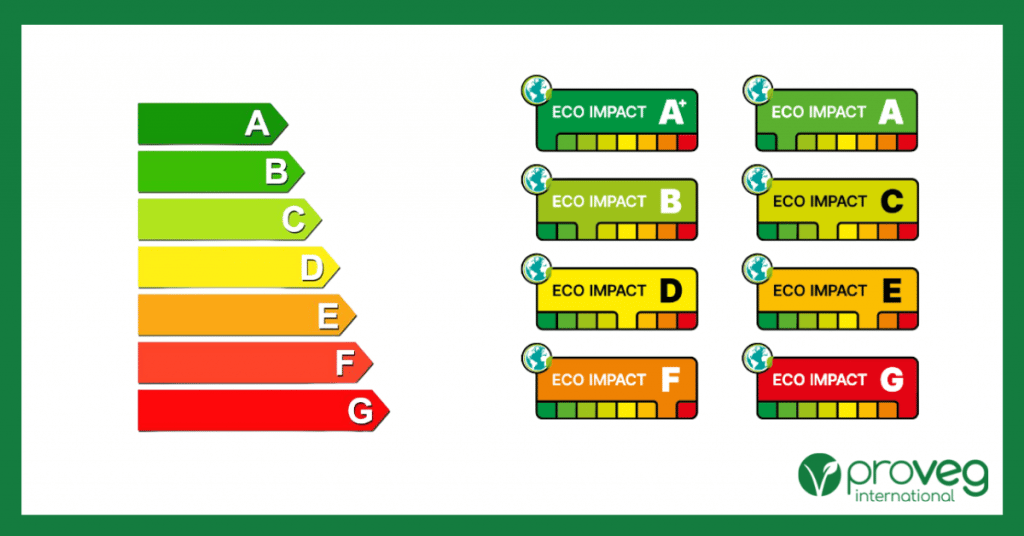
Environmental-impact labelling is a way for brands to communicate their product’s eco-credentials to consumers – typically via front-of-pack messaging. There’s currently no single international standard, so it’s up to brands to choose their preferred method. But the best thing you can do is make your label easy for consumers to understand – choose a single metric such as carbon emissions, that is intuitively colour-coded, such as green for low environmental impact and red for high environmental impact.
To make it credible, use a trusted third party to certify your environmental impact or emissions claims.
Summary
In conclusion, your packaging is an incredibly important tool to successfully target the flexitarian consumer.
- Make sure to use indulgent language whilst emphasising taste, convenience, health, and familiarity in both your messaging and your imagery.
- Opt for ‘plant-based’ over ‘vegan’ in your wording, but consider getting V-label certified to increase credibility and consumer confidence.
- Consider promoting your product’s sustainability metrics on front-of-pack to appeal to eco-conscious consumers.
For a deeper dive into some of these topics, check out ProVeg’s past New Food Hub reports.
References
- ProVeg International (2022): How to target flexitarian consumers with plant-based products. Available at https://corporate.proveg.com/article/how-to-target-flexitarian-consumers-with-plant-based-products/#packaging-for-flexitarians Accessed 2022-08-23.
- Kalaganis, Fotis P., et al. (2021): Unlocking the Subconscious Consumer Bias: A Survey on the Past, Present, and Future of Hybrid EEG Schemes in Neuromarketing. Available at https://www.frontiersin.org/articles/10.3389/fnrgo.2021.672982/full Accessed 2022-08-23.
- ProVeg International (2022): Convenience by design: how to make plant-based products easy for consumers and attractive to flexitarians. Available at https://corporate.proveg.com/article/convenience-by-design-how-to-make-plant-based-products-easy-for-consumers-and-attractive-to-flexitarians/ Accessed 2022-08-23.
- Innova Market Insights (2022), Innova Database: Food Ingredients 1st, VegNews, Mother Earth Vegan Hotel.
- Good Food Institute (2020): Strategies to Accelerate Consumer Adoption of Plant-Based Meat. Available at https://gfi.org/wp-content/uploads/2021/01/FINAL-Consumer-Adoption-Strategic-Recommendations-Report.pdf Accessed 2022-08-23.
- Smart Protein (2021): What consumers want: A survey on European consumer attitudes towards plant-based foods. Country-specific insights. European Union’s Horizon 2020 research and innovation programme (No 862957).https://proveg.com/what-we-do/corporate-engagement/consumer-attitudes-plant-based-food-report/ Accessed 2022-08-23.
- Fromm J. (2020): Sustainable Food Trends Will Become Center Of The Plate With Modern Consumers. Available at https://www.forbes.com/sites/jefffromm/2020/11/10/sustainable-food-trends-will-become-center-of-the-plate-with-modern-consumers/ Accessed 2022-08-23.
- Innova Trends Survey 2021. Average of Brazil, China, France, Germany, India, Indonesia, Mexico, Spain, the United Kingdom, and the United States.
